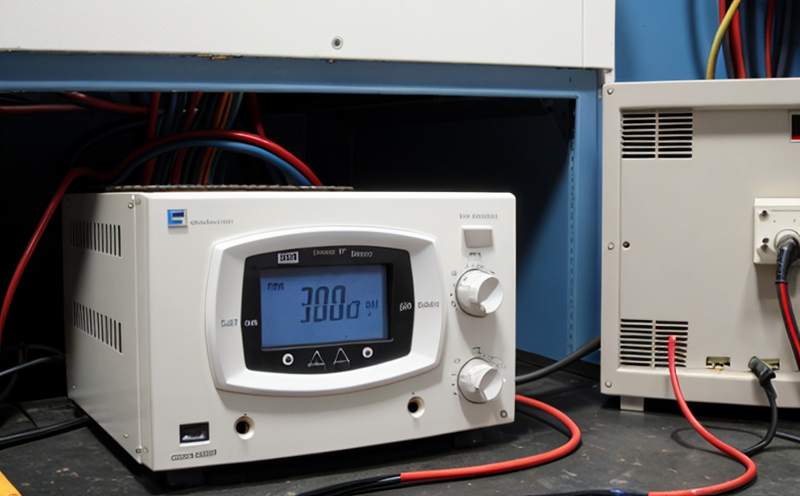IEC 61000 4-6 Conducted Disturbance Immunity Testing of Lighting Systems
The International Electrotechnical Commission (IEC) has established the standard IEC 61000-4-6, which specifies methods for testing conducted disturbance immunity. This standard is crucial in ensuring that electrical and electronic systems, including lighting systems, can withstand electromagnetic disturbances without failure or performance degradation.
The primary goal of IEC 61000-4-6 is to evaluate the susceptibility of a system to external electromagnetic interference (EMI). Conducted disturbance immunity refers to the ability of an electrical device to function correctly when subjected to conducted interference. Conducted interference can be transmitted through power lines, signal cables, and other conductors.
The testing procedure involves applying specific types of conducted disturbances to the lighting system under test. The standard defines various test conditions that simulate real-world scenarios where the equipment might encounter electromagnetic interference. These tests are essential for manufacturers, developers, and quality assurance teams to ensure their products meet regulatory requirements and perform reliably in the field.
During testing, a controlled environment is created using an EMI chamber or similar setup. The lighting system under test is connected to power sources and other components necessary for simulating real-world conditions. The disturbances are then applied through conductors such as power lines or signal cables. The performance of the lighting system is monitored throughout the tests to identify any changes in functionality, stability, or reliability.
The standard provides detailed guidelines on how to prepare specimens for testing and the equipment required. It also specifies acceptance criteria that define when a test can be considered successful. Compliance with these standards ensures that products are robust and reliable under various electromagnetic interference conditions.
IEC 61000-4-6 is widely recognized in industries where high reliability of electrical systems is critical, such as telecommunications, automotive, and industrial automation. By adhering to this standard, manufacturers can ensure their lighting systems are immune to conducted disturbances, thereby enhancing product safety and performance.
Understanding the scope of IEC 61000-4-6 helps stakeholders appreciate its importance in ensuring reliable operation of electrical devices under real-world conditions. Compliance with these standards not only meets regulatory requirements but also enhances consumer trust and satisfaction by guaranteeing product reliability and longevity.
Why It Matters
The significance of IEC 61000-4-6 cannot be overstated, especially in an era where electromagnetic interference is a growing concern. Conducted disturbances can originate from various sources such as electrical machinery, communication networks, and even natural phenomena like lightning strikes. These disturbances can adversely affect the performance and lifespan of lighting systems if not properly tested.
For quality managers and compliance officers, ensuring adherence to these standards is critical for maintaining product integrity and meeting regulatory requirements. Failure to meet these standards could lead to product recalls, legal issues, and damage to brand reputation. On the technical side, R&D engineers benefit significantly from this testing as it helps them identify potential weaknesses in their designs early on.
From a procurement perspective, knowing that suppliers comply with IEC 61000-4-6 provides peace of mind regarding the reliability and quality of purchased components. This assurance is particularly important for large-scale projects where system failures can have significant financial implications.
The testing process outlined in this standard ensures that lighting systems are robust enough to handle the electromagnetic environment they will encounter once deployed. By simulating real-world conditions, manufacturers can identify areas needing improvement and implement necessary changes before product release.
In summary, compliance with IEC 61000-4-6 is not just a technical requirement but also a strategic decision that contributes to long-term business success by enhancing product reliability and customer satisfaction.
Applied Standards
| Standard Number | Description |
|---|---|
| IEC 61000-4-6 | Electromagnetic compatibility (EMC) standard for conducted disturbance immunity testing of electrical and electronic equipment. |
| ISO/IEC 27001 | Information security management systems standard applicable to organizations handling sensitive data, including those involved in lighting system development. |
| EN 50169-2 | Standard for power quality and electrical energy measurement in railway applications; relevant when considering the impact of conducted disturbances on railway signaling systems. |
The above table provides an overview of some key standards that complement IEC 61000-4-6. Compliance with these standards collectively ensures a robust approach to managing electromagnetic interference, thereby enhancing overall system reliability and performance.
Use Cases and Application Examples
- Manufacturing Facilities: Testing conducted disturbance immunity is crucial in manufacturing environments where multiple machines are interconnected. Ensuring that lighting systems can withstand electromagnetic interference helps prevent downtime due to equipment failures.
- Railway Signaling Systems: In railway applications, conducted disturbances must be carefully managed to avoid compromising the integrity of signaling systems. This testing ensures that lighting used in these environments is immune to potential disruptions from nearby electrical equipment.
- Data Centers: Data centers house numerous electronic devices and require reliable lighting solutions. Conducted disturbance immunity tests ensure that the lighting system continues to operate effectively amidst various electromagnetic interferences within the facility.
- Airports: Airports are complex environments with many sources of conducted interference, including communication systems and aircraft electronics. Testing conducted disturbance immunity helps maintain safe and efficient operations by ensuring lighting systems remain reliable under all conditions.
The examples provided highlight how IEC 61000-4-6 plays a vital role across diverse industries. By ensuring that lighting systems are immune to conducted disturbances, these tests contribute significantly to operational safety, reliability, and efficiency in various applications.





